Using the MX49/61/88 with Logic Pro X
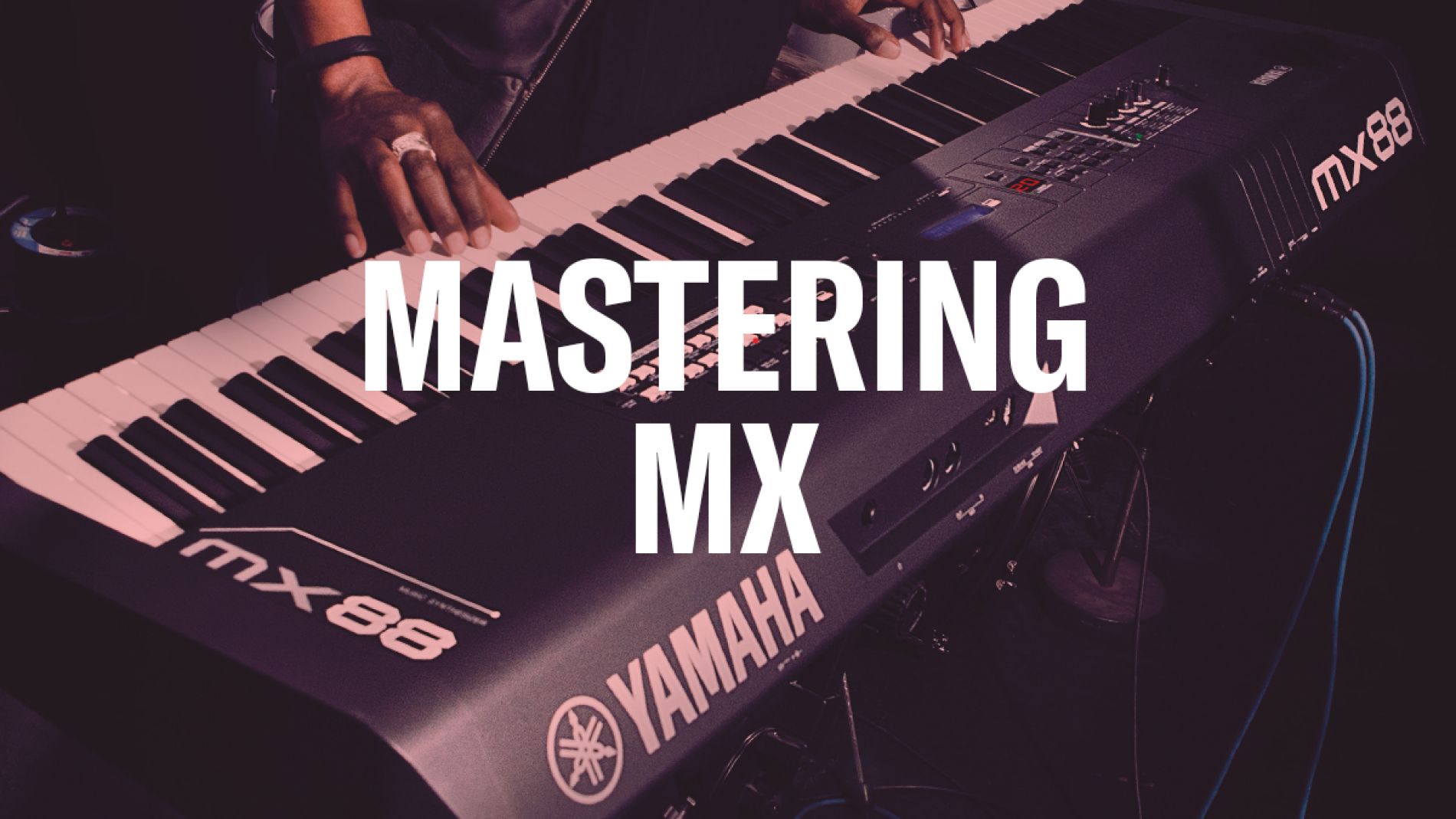
Note: It is important to have the most up-to-date versions of Mac OS, Logic Pro X and any related drivers. Yamaha releases firmware updates for Synthesizers that often add new features and capabilities (This is a very important part of the MONTAGE Music Synthesizer). Stay current with these firmware updates. You can find updates for Mac OS and Logic Pro X in the App Store.
Updates for the Yamaha Steinberg USB driver and any firmware updates are here. Before setting up the MX with Logic Pro X be sure to install the Yamaha Steinberg USB driver on your system and all software is up-to-date.
For this article I am using an MX49, but the procedure is exactly the same on all MX models including the first versions of the MX49 and 61, the new MX49/61 (BK/BU/WH) and the MX88.
Audio MIDI Setup
MX Settings: Press the [UTILITY] button on the MX. There are 4 selections in the Utility menu:
- 01: General
- 02: MIDI
- 03: Controller
- 04: Remote
Use the cursor arrow to select “02: MIDI” and press [ENTER]. Make sure that the MIDI setting reads “IN/OUT= USB” and press the [STORE] button to store the setting. The Yamaha Steinberg USB driver (YSUSB) handles both audio and MIDI connectivity for the MX Music Synthesizer. After installing the YSUSB driver, connect the MX to the computer using the USB TO HOST port on the MX and an open USB port on your Mac. Open the Apple “Audio MIDI Setup“ application (easily found by doing a Spotlight search or looking in the Utility folder on your Mac) and check to see that the MX is connected. Audio settings should look like this: 
Both the input and output settings reflect the 2 channel output and 2 channel audio connection at 44.1 kHz, 24-bit. Under the “Window” menu on the Audio MIDI Setup application select “Show MIDI Studio”. Any device that has been previously connected will appear as a greyed out icon but connected devices show an active icon. The MX will appear as a five-port MIDI interface. Double clicking on the icon will open the Yamaha MX properties (on the right hand side below). I have connected an MX49 but if you have an MX61 or MX88 it will appear similarly: 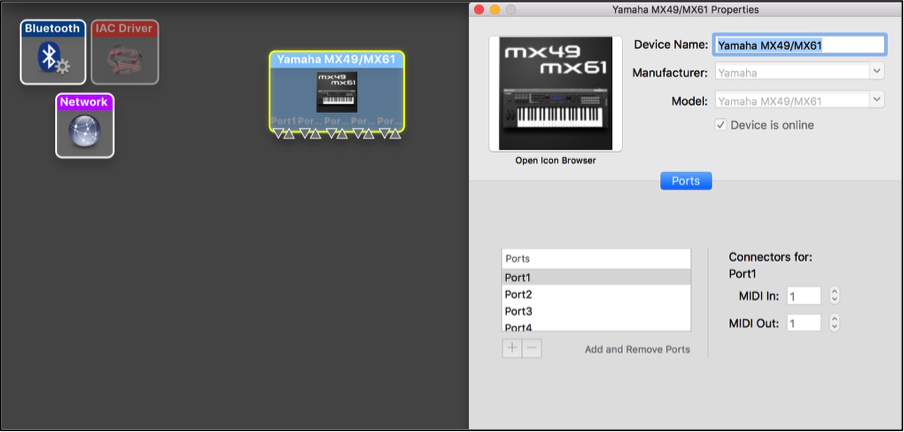
The computer sees the MX as a five port MIDI interface. The function of each Port is below: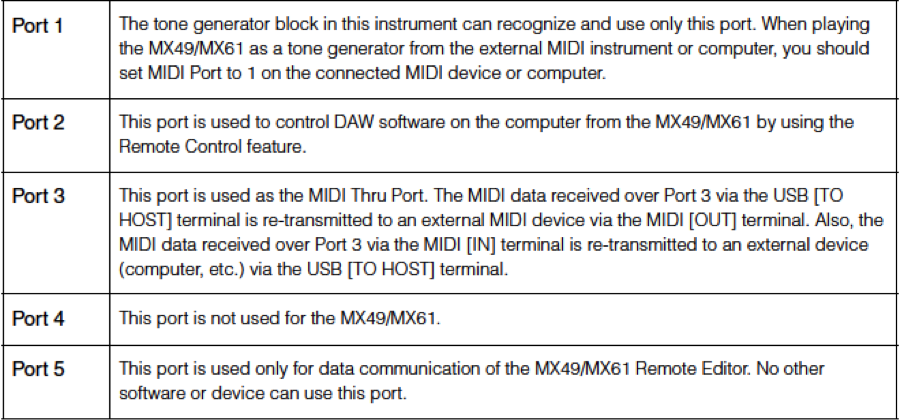
Only Port 1 and Port 2 are used with this setup (more on that below). With the MX still connected to the Mac, close Audio MIDI Setup and open Logic Pro X. Connection and Setup in Logic. After launching Logic Pro X, go to the File menu and select “New” to create a new Project. The wizard will open with a few selections. Choose “External MIDI”: 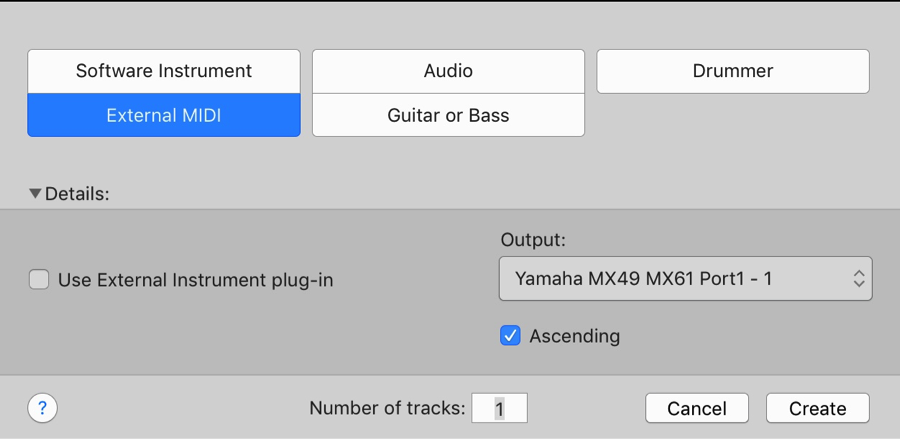
This shows the MX as the MIDI device and it is here that you can select the number of tracks. In this article I will be using four MIDI tracks. Select “Audio” to open the audio settings: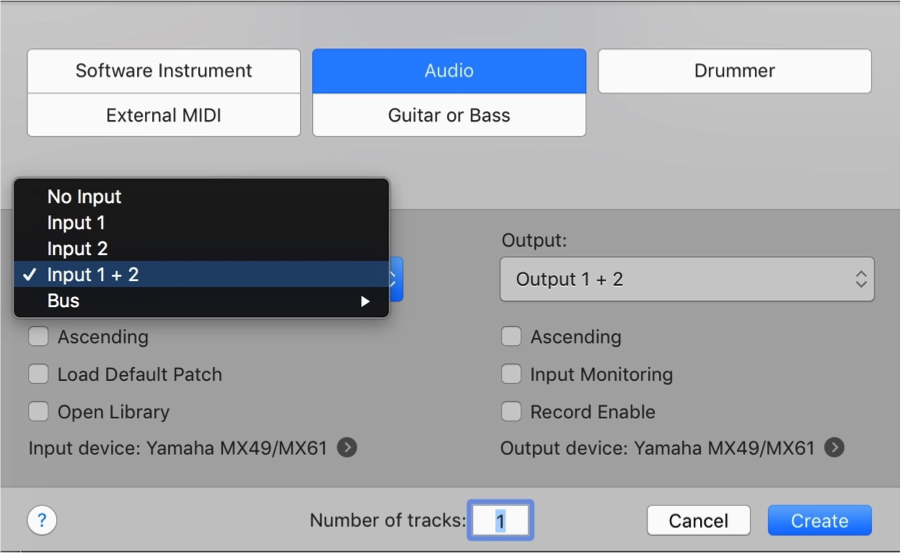
The MX can be configured in a few ways. For most applications I use the “Input 1+2” setting under Input to record a stereo track. I always leave the Output to “Output 1+2” to monitor in stereo. I selected just one track for this article that I will use for mix down. Select “Create” to set the project.
The next step is configuring basic DAW Remote functionality. On the MX, press [UTILITY], select “04: Remote” and press [ENTER]. This opens the “DAW Select” screen and the default is set to Cubase. Move the Data Wheel or use the [INC/YES] button to select “LogicPro” and press the [STORE] button to register the setting. Selecting the Mackie Control setup in Logic Pro X is the easiest way to get basic DAW remote functionality. This setup gives you basic start/stop of the transport and allows you to select tracks using the up/down/left/right arrows on the MX. To set up DAW functionality go to the Logic Pro X menu and select “Control Surfaces/Setup….”: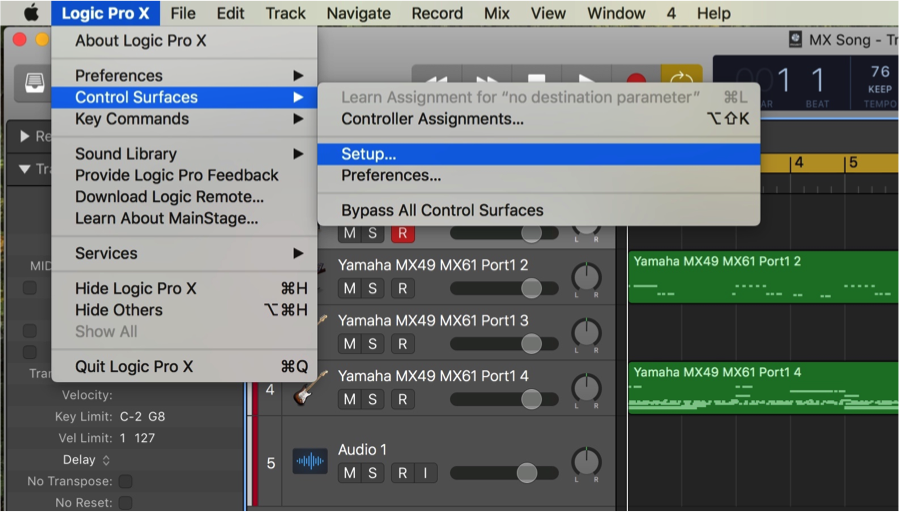
In the upper left corner of the Control Surface Setup window you will see the “New” pull down menu. Select “Install”, then select “Mackie Designs/Mackie Control/Logic Control” and select “Add”: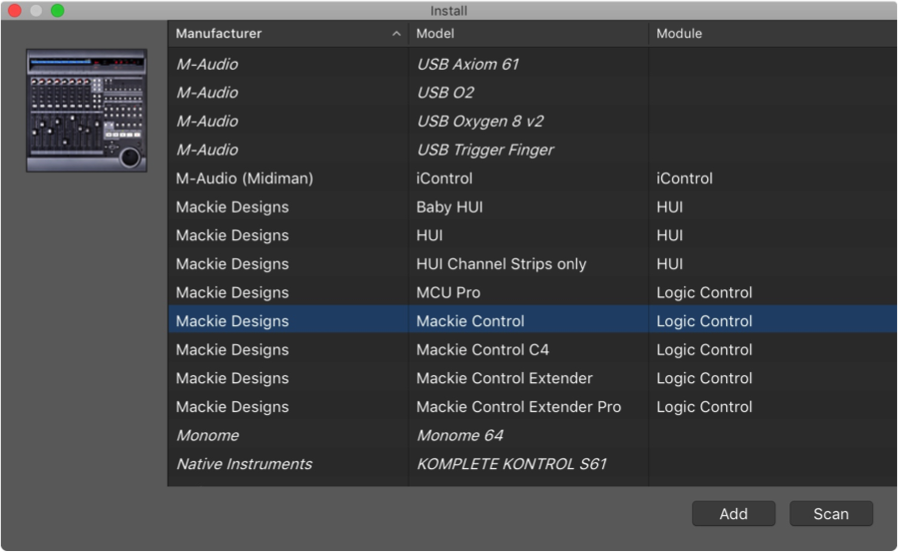
The Mackie Control icon will now appear as one of your control surfaces. Right-click on the icon and you will see the dialog box below. Select “Show/Hide Inspector” or press the letter “I” on your keyboard to open the Inspector: 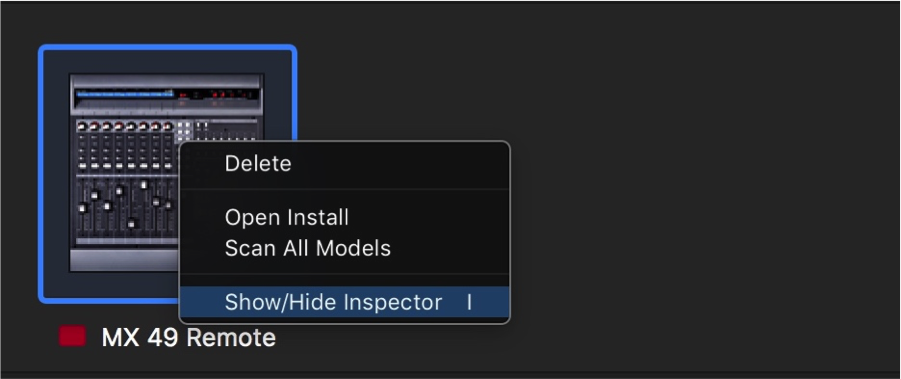
In the Inspector window you will see a list for the controls for Mackie Control. The important setting is assigning the Input and Output Port for DAW control to “MX49/MX61 Port 2”. I also renamed the control to “MX49 Remote”: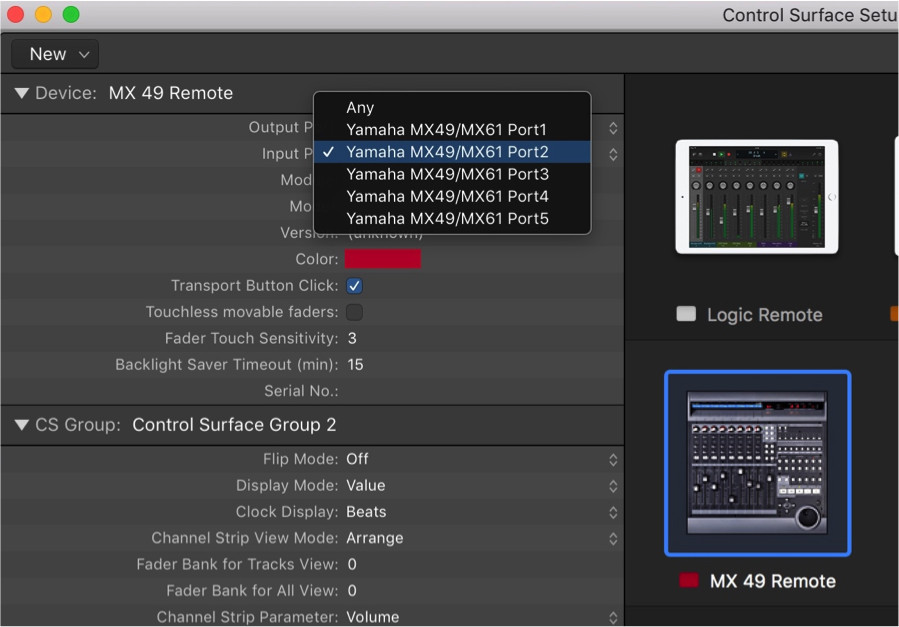
Now that this is set, touching the [DAW REMOTE] button on the MX transforms the physical [PLAY]/[STOP] buttons control play and stop in Logic Pro X. The UP/DOWN/LEFT/RIGHT cursor controls on the MX can also be used to select tracks in Logic as well.
Note: There are advantages when using the MX series with Cubase. Cubase allows for more DAW control options because of a special extension component and MX Remote Editor application that is found in the “Remote Tools” download found here. Logic Pro X does not use these specific components but the “learn” feature allows for customization of the physical controls to different AU software instruments and effects.
Using MX with Logic
DAW Rec QuickSetup
MX provides a quick way to set it up to use with the Mac using the QuickSetup feature. This is accessed by first pressing the [UTILITY] button and then the [JOB] button. The first selection is “01: Quick Setup”. Press the [[ENTER] button and move the [DATA WHEEL] to select the second option “DAW Rec” and press [ENTER] again. This will turn off local control on the MX. The QuickSetup selections are listed below (page 68 in the MX Reference Manual):
Port Setup in Logic Pro X
As mentioned above, MX shows up as a 5-Port MIDI interface. Port 1 handles the MIDI communication to and from the computer. When creating a MIDI sequence in Logic select Port 1 in the inspector on the left side: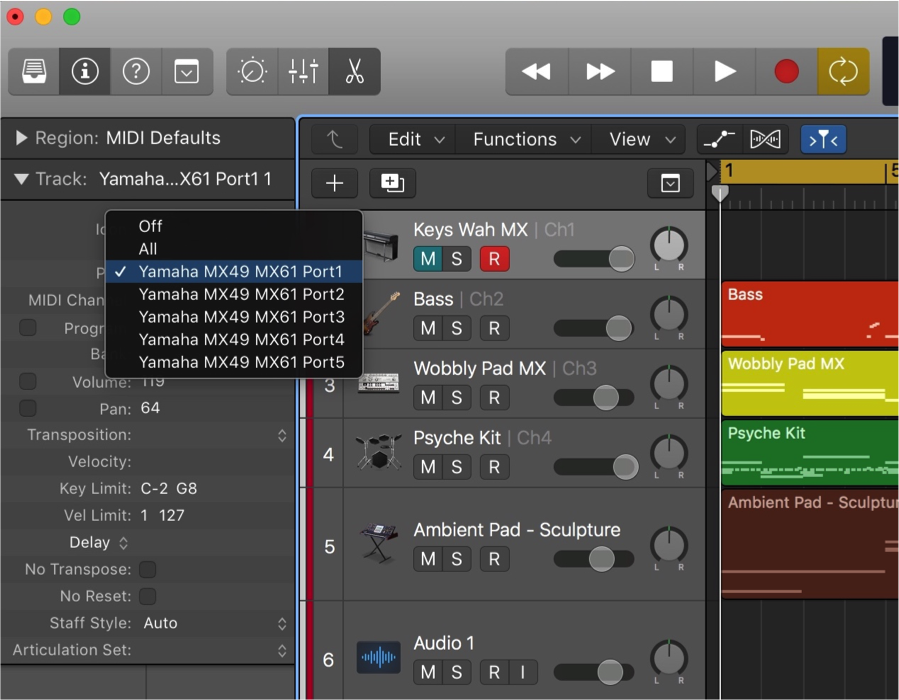
Part Select
I like to use the MX as a 16 Part multitimbral instrument with Logic Pro X. A great place to start is the Performance 001 “MX Category”. Over on the far left side of the panel on the MX keyboard is the PART SELECT button. This allows you to individually select Parts and change the Voice, and basic mixing parameters like Pan, Volume, Chorus Send, Reverb Send, Dry Level and which Part has the Insertion Effect on (4 Parts can have an Insertion Effect active for things like distortion, rotary speaker and other effects):
You can also use the MX Performances as starting points as well, plus record the associated arps and drum patterns as MIDI data. In a Performance, Parts 1 and 2 are the Main and Split/Layer Parts, respectively, and Part 10 is the Rhythm Pattern Part. If you wish to record these parts simultaneously, create 3 tracks, set the tracks to record on MIDI channel 1, 2 and 10, and set them to record simultaneously. On the MX, select the QuickSetup “Arp Rec”. This will allow you to record the MIDI data of a Performance. You can always simply record a stereo audio track as well.
Logic Pro X “Learn” Feature
As I stated above, the basic remote setup on MX doesn’t have the same level of control and integration as in Cubase. However, Logic Pro has a nicely designed “learn” feature that allows for deeper control of transport, AU control and other features. Below is a screen shot of the Sculpture, one of the included AU virtual instruments included with Logic Pro X. Sculpture has a morphing filter and I can use it when I want to control the cutoff frequency of this filter with a knob on the MX. First, I select the control in Sculpture that I want to assign by clicking on it—in this case cutoff frequency of the filter. Under the Logic Pro X menu, select Control Surfaces/Learn Assignment (or use the key command “Command+L”):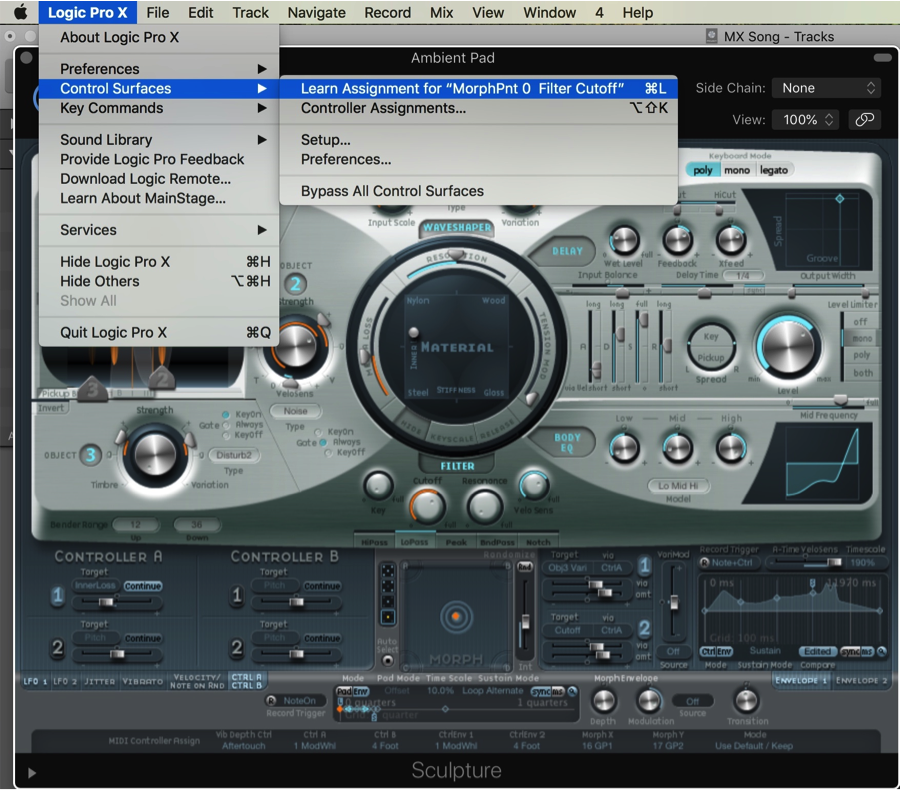
A dialog appears prompting you to move a control on the MX. In this case, I moved the cutoff frequency knob on the MX and immediately it is set to control the cutoff frequency in Sculpture: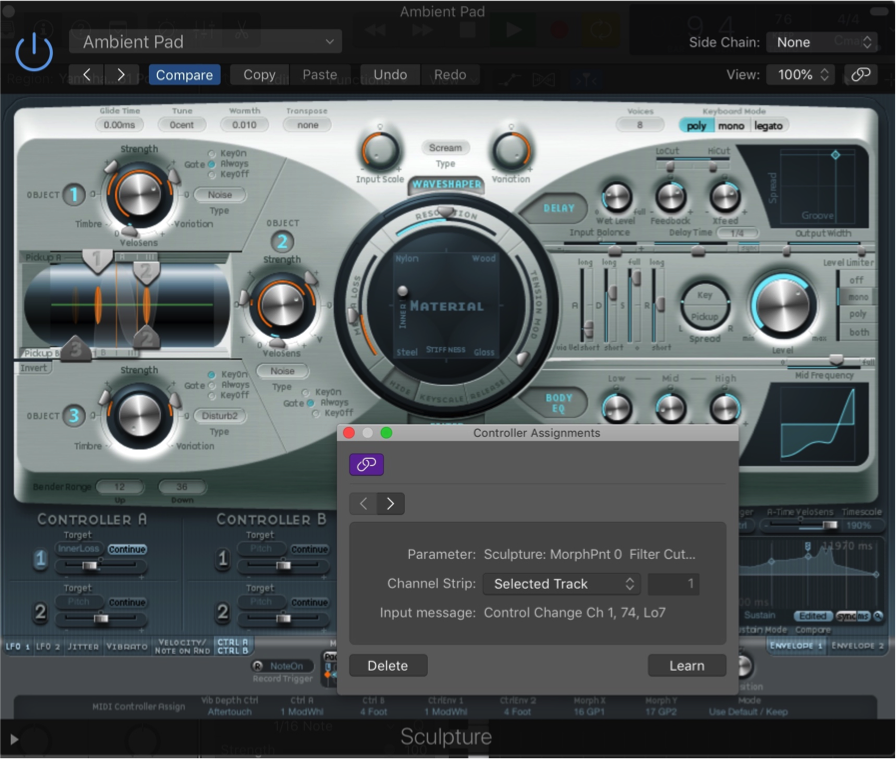
That’s it – let us know if you have any comments or questions in the Forum here!
Keep Reading
© 2025 Yamaha Corporation of America and Yamaha Corporation. All rights reserved. Terms of Use | Privacy Policy | Contact Us